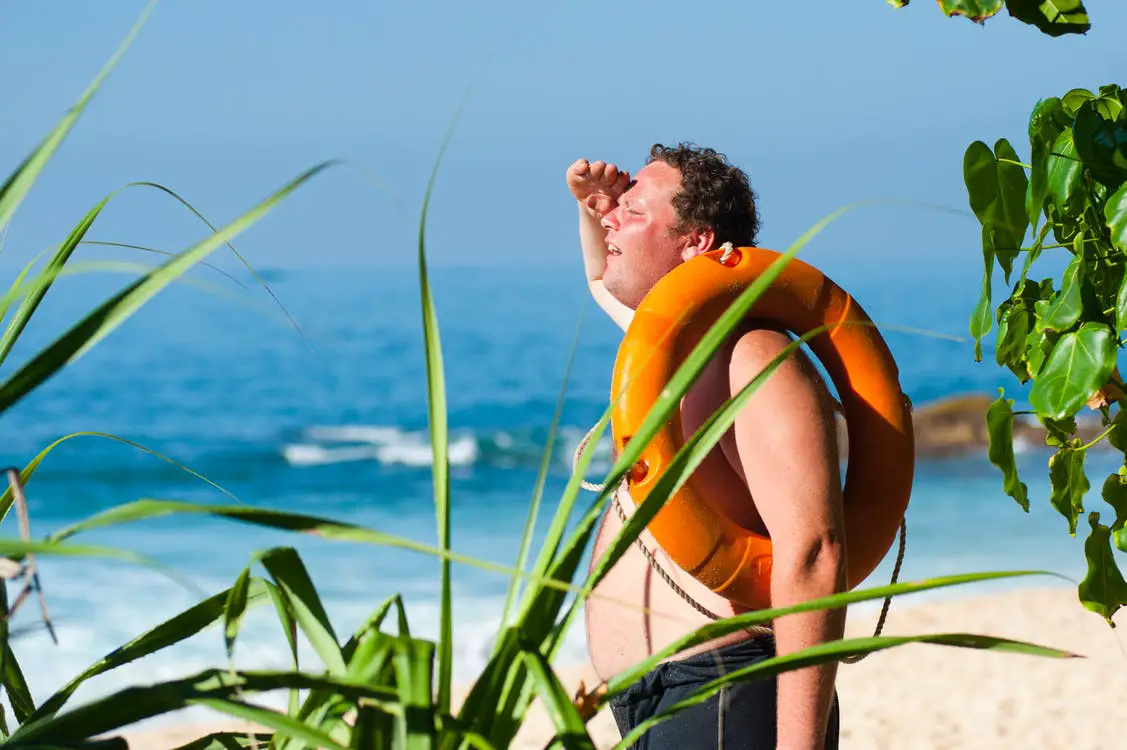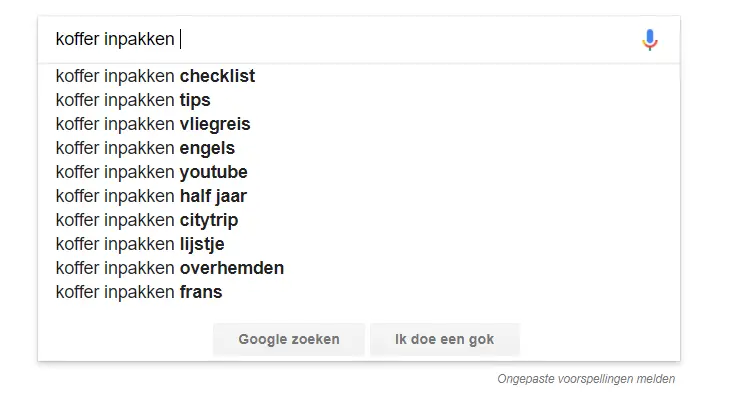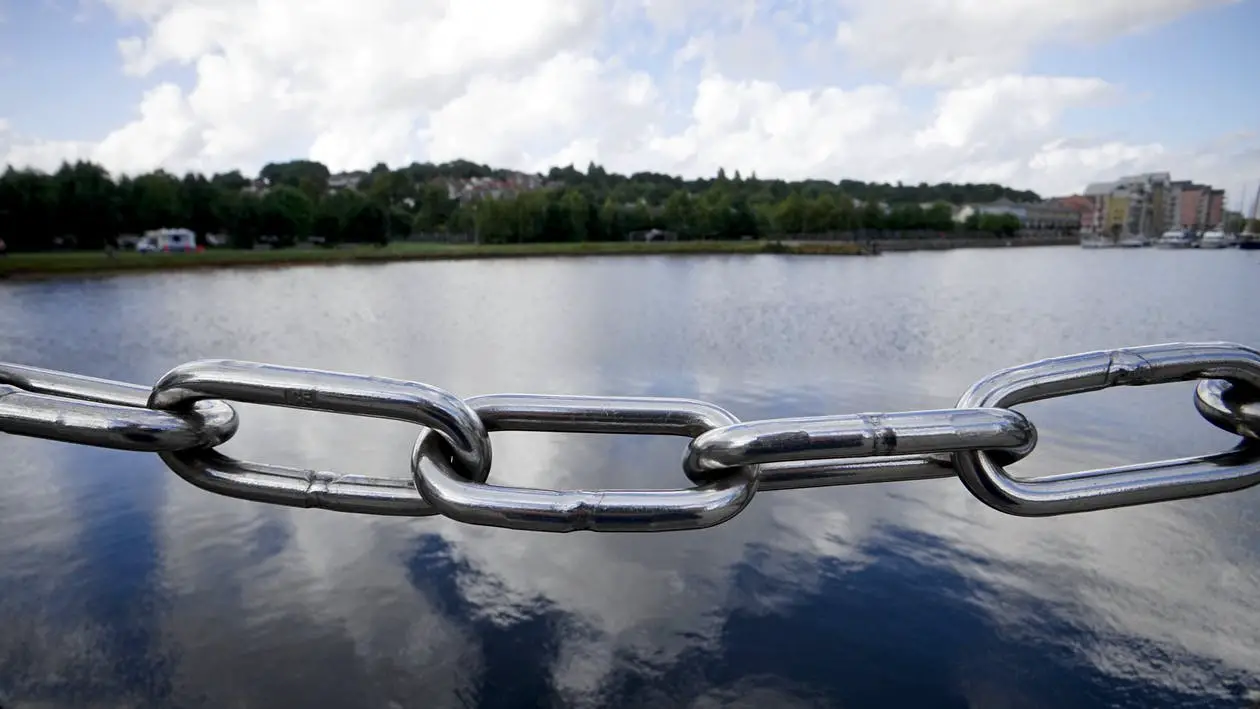![How To Deal With Sensory Overload [9 Tips For Overstimulation]](https://happyrubin.com/wp-content/uploads/2019/12/ik-ben-overprikkeld-150x150.jpg)
How To Get Your Website Found By Google? 7 Steps To #1 [SEO]
![How To Get Your Website Found By Google? 7 Steps To #1 [SEO]](https://happyrubin.com/wp-content/uploads/2018/02/gevonden-worden-in-google.jpeg)
In this article I’m going to teach you exactly how to be found in Google better. Here you will find the exact method to rank high in Google with your website and thus get thousands of free visitors in a sustainable way. In this article you will learn in 7 proven steps what is effective.
Contents of this page:
Briefly: what is SEO?
Ranking higher in Google is called ‘SEO’ (Search Engine Optimization). This is the activity to get as many visitors as possible through search engines without advertising .
Which ‘search engines’ are we talking about? Feel free to make it singular: almost everyone uses only Google, so SEO could just as well have been called GO (Google Optimization).
Why would you want to rank higher in Google (SEO)? 3 reasons!
In this article, we are particularly interested in the most effective actions you can take to rank high in Google, which will help you sustain tens of thousands of free visitors .
There are three main reasons for wanting to rank higher in Google. Here they come:
- It’s free : you don’t have to pay for these visitors. So you have no variable costs for this! Where with advertisements you always have to pay money so that new visitors come to your site, with SEO you are completely free of recruitment costs.
- It’s passive : Have you built a large audience through SEO? Then you don’t have to do anything for your visitors. They just keep coming while you can focus on other things. If you hadn’t opted for SEO, but for example Facebook, you should have posted daily messages so that visitors keep coming. Even if you’ve built 1,000,000 Facebook followers, no one comes to your website when you suddenly stop posting.
- It will last for years . Where Facebook is currently killing business pages by gradually reducing their reach further and further, you will be in the right place for years to come because you are clearly visible on Google.
Step 0 – For good SEO you have to understand the basic logic …
Make sure you understand the six points below …
Point 1: someone searching for ‘cream puffs recipe’ will not end up on a page about accountancy

This sounds logical, but this is the basics and too often this goes wrong. The deliberate use of specific words is still the basic (!) Of search engine optimization. If you want people to end up on your accountancy page, you will actually have to mention the word ‘accountancy’ (in prominent places) in the page.
The three most prominent places for search terms are:
- The title of the page.
- The first paragraph of the page, or even better, the first sentence of the page.
- The subheadings of the page.
Point 2: Set up your page (including the above prominent places) on a keyword that is actually searched for

As you learned in the previous section, the title is one of those important places to digest keywords. It simply has to contain the keywords you want to be found on.
And now it comes: these must be words that are actually searched for 50 times or more per month via Google. How to find out how often certain words are searched for, you will learn later in this article. First, we must be well aware of the importance of this …
If you want to attract visitors through SEO, don’t be self-centered in determining your titles, but deliver what is asked.
On the other hand, if you want to get readers through Social Media, feel free to write egocentric, unclear, ‘nice’ or dreamy titles such as: “A new beginning”, “The fight in silence and loneliness” or “Meeting yourself.” Realize that you will not get readers through Google.
If you want readers through Google, you have to write concrete titles based on searches. Nobody is looking for “A new beginning”, “The fight in silence and loneliness”, “Meeting yourself” or “Give the gift of your love to everyone”. In contrast, thousands of people monthly search for: ‘How to Set Goals’, ‘Meditation Tips’, ‘Non-duality Explanation’ or ‘Compliment Examples’. If you just create such titles and actually provide the best information in the article, you will already get tens of thousands of visitors from Google. There is nothing more to it.
For example, if you have written a blog article entitled ‘Inspire with your own happiness’, you better change that title to ‘How do you get happy?’ Because nobody searches for ‘inspire with your own happiness’ and 2,000 people a month look for ‘how do you become happy’ . Or change the title to ‘How can you inspire?’ Because 1,000 people a month search for ‘how can you inspire’.
By the way, above you read the word ‘keyword’ as singular, but that also includes related search terms . If your page is about ‘relationship dip’, the search term ‘rut in relationship’ will also lead to the same page. In fact, use synonyms and related search terms on your pages as much as possible. On the relationship dip page you also talk about ‘saving a relationship, relationship crashes, relationship gets into a rut, etc.’ More on this later.
Point 3: you cannot ‘SEO’ your site, but individual pages

The Google search results never redirect people ‘to a complete site’, but to specific pages of a site. You can only end up on one specific page from Google. So basically see SEO as something you have to do per page, and not at the site level.
Basically you do not apply SEO to your entire site, but you work per page. So you can’t get started to rank your entire site on keywords A, B and C.
You let page X rank on keywords A, B and C, you rank page Y on keywords D, E and F and you rank page Z on keywords G, H and I.
Point 4: synonyms and very related keywords should be covered on one page

The words showing empathy, empathy and empathy are synonyms. So don’t make three separate pages so that you treat each variant on a separate page.
Treat these three words as a set on one page. Include closely related (search) words (perspective, listening, feeling) that fulfill the same search intent. When I talk about ‘search term’ (singular) from now on, I also mean the whole set with related search terms (plural).
It would also be very strange if an article about empathy did not contain the words ‘perspective, listening and feeling’. Include those words in the page, or Google will suspect you wrote the page specifically for the keyword ’empathy’. Google finds deliberate SEO around a certain search term unnatural and therefore wrong.
Make the text as natural as possible. Then it will automatically contain related (search) words. By the way, this will automatically work if you write long texts (2,000+ words).
Point 5: Don’t dedicate two or more pages to the same search term – build one quality page

Let’s take the example from the article on empathy again. Suppose you wrote an article with ‘4 secret tips for more empathy’. A few months later, you write a new article called “6 Examples for Greater Empathy.” This is wrong. Now you have two pages with answers to the same or strongly related search intent.
What you should have done is update your existing article so that it becomes one comprehensive article with 4 tips and 6 examples about empathy.
Why is this so? For each search term set, only one page can be the best on the entire web – including Google search results. Also, there can only be one on number 2 and one on number 3.
Your intention is – if all goes well – to show Google that you have the best article or page about a certain search term. Google will also rank the best possible pages the highest.
However, if you let Google know that you have two pages on the same subject, it is less likely for Google to believe that one of those pages is the best of the internet. There is additional information elsewhere , so it is plausible to assume that your pages do not provide complete information. Your two pages also compete with each other for the same search terms.
The following tip will help you a lot with this …
Point 6: Don’t write, but document!

Don’t see your website as a place where you ‘write texts’, but see your website as your external memory. You always add everything you know to the blog articles and pages of your website. Not in ‘a new article that you have to write’, but in the already existing article on that subject.
To use another analogy, don’t think of your website as a magazine, but as a book. You do not have to keep posting a new edition / new blog articles , but you keep documenting your current blog articles. Therefore, set the publication date of your blog articles. Don’t write, but document!
The website you are reading right now could only get that big because I document. Wherever I go, and wherever I experience something, I write it directly on my mobile.
Suppose you are going to a course or meeting. Then there is almost everyone in the room with a notebook. Once at home, they put it in the closet. But not you. You add your insights directly to your website. And then you throw away your notebook. Relax: everything is on your blog! Documenting has brought Richard Branson to his fortune.
Now that you’ve had an SEO tutorial for the basics, it’s time for the 7 steps!

Doing SEO yourself is an excellent idea. After all, it’s your business, so it’s good to at least keep an overview. Let’s go to the steps that will make you grow giant with SEO …
Step 1 – Put yourself in the shoes of Google: what does Google want?
This step is essential. It is the foundation of your SEO adventure. We really need to get to the basics of SEO first: put yourself in the shoes of Google. Now ask yourself: what does Google want? Do you already know the answer? I’ll say it in advance: Google wants to give the people who enter a search query the best possible answer to their question.
How do you ensure that you actually provide the best information in the article? Simple: search for the relevant search term, such as ‘meditation tips’, and see what articles are on the first page of the search results. If those are all articles with 17, 21, 19 and 16 tips, then you must ensure that your article simply provides more tips. For example, “24 Meditation Tips You Wanted To Know Before.”
It is very important to understand this well, because if you understand this, you already know what is not going to work for SEO. We will discover that in the next step …
Step 2 – Understand from Google’s perspective what works less well for SEO

Now that you know that Google wants to present the best possible answer to the searcher’s question, you can take the following thinking direction: what’s not going to work for SEO? Let me already tell you: What does not work / will no longer work, is actively collecting links.
First a brief explanation of ‘collecting links’. Links to your site are called ‘backlinks’. Google uses backlinks as ‘ votes ‘ from other websites to indicate which pages on the internet are the best on a particular topic. For example, if there are two super valuable articles with the best smoothie recipes, then Google must determine which of these articles should be ranked first in Google. For this Google looks at a large number of factors, but one of the most important factors is backlinks.
It’s not going to work to lobby other site owners to link to your website. Unofficially , gathering (contextual!) Links is one of the most effective SEO factors, but Google’s intention is for it to happen naturally . That means: without influence by you. So Google only wants that to happen if the website linking to you genuinely believes your article is a qualitative resource.
Google therefore finds it unacceptable if you pay for a link to your site. Then you can get a hefty, almost impossible to reverse, penalty on your pants from Google. If it had been possible to pay for backlinks, the best search results would not have been at the top, but the results would have been at the top of the website owners who happened to have paid the most money. Then you would come across very bad search results in Google.
In practice, website owners actively lobbied to collect backlinks: guest blogging and asking other website owners for contextual links also works in practice and Google thinks that’s fine, but that’s only because Google is not necessarily bad finds. However, it is not really desirable, because it is not a natural way to identify the best sources. Paying for links is penalized, as you learned in the previous paragraph.
The bottom line of this step is: don’t waste your time lobbying for backlinks . There’s a chance that Google will get so smart in the future that it can know exactly which websites it shouldn’t need to boost its rankings. What should you do then? What does have an effect? You are now ready for step 3.
Step 3 – Understand what works best from Google’s perspective: quality!

From the previous step we could conclude that Google will increasingly make updates to its algorithm to reduce the ‘factors to be manipulated’, such as influencing backlinks to your site or tactically placing the keywords on your page.
What will then always work? Go back to step 1. Google wants to provide its searchers with the best possible answers. What will always work, is that you ensure that you will give the searcher the best possible answer whatever can be found on the internet. Doing so will definitely put you in position 1 for the keyword in question, because that’s what Google’s algorithm is built on and what it will further refine in the future.
So focus on what makes the difference: quality . This is what Google’s algorithm is built on and this is what will keep you afloat in the long run.
The secret is that you don’t have to do anything about the technical aspect to rank high in Google. If you create the most qualitative pages in terms of content, Google cannot ignore you.
Let go of all technical matters, such as ‘sitemap’, ‘alt tags’, ‘title tags’ … Also let go of the active collection of backlinks. Google will find your pages with ease without all those things, if indeed they are the best possible answer to the keyword. The algorithm will simply ensure that the legitimate page will be in position 1 on Google.
As for backlinks: you will get them completely naturally. People will notice your articles and they will voluntarily refer to your site because they find your article the best possible resource to refer to. And the joke is: your article is also the best possible source. Suppose you have a free afternoon. You have the choice to use that time to effortlessly arrange a backlink, or to write a quality article on a topic related to your website, what would you do if you knew that quality articles will naturally attract backlinks ? Let’s go to the next step!
Step 4 – Write 30 articles of 2,000-7,000 words

Now that we know that writing quality articles is the best way to achieve SEO, we are actually going to write them. If you write 20 articles that all make it to the first page of Google for their search term, you will get thousands of free visitors per month.
Start by making a list of 30 topics for blog articles.
How do you come up with the topics for these articles? You do this by examining, through logical thinking, what could be a logical and frequently asked question that is related to the topic of your website. So there is no need for ‘keyword research’. I already said it: with this SEO step-by-step plan, technical knowledge is not necessary. Just think logically.
You just check what you would Google. If it feels like a logical search term to you, and you can imagine that others would Google it too, you’ve got your hands on a blog topic! For example, if you have a travel website, you would end up on the topic: ‘Suitcase packing tips’. Repeat this process 29 times.
Then you are going to write the headings of your paragraphs. Let’s continue on the example: ‘Suitcase packing tips’. You might think: how will I ever get 2,000+ words if I can answer the question in two small paragraphs? Here is an essential step: you are going to include several related search terms in your article. To accomplish that, you start typing your subject into Google, and you don’t finish it. Now you will be presented with other popular searches. Pick out matching, related search terms here and cover them in your article.
From the example of the screenshot below, I would use the following search terms as extra paragraphs in my article ‘Suitcase packing tips’: ‘Suitcase packing checklist’, ‘Packing a suitcase for half a year’, ‘Packing a suitcase for a city trip’ and: “How do I pack my shirts”. Those would then all become paragraphs in my article about ‘Suitcase packing tips’. Actually, you are still working on ‘keyword research’ in this way.

Then look at the bottom of the Google search results for even more suggestions. Also click through on these search terms, scroll again at the bottom of the search results screen and see what other input you can find for the paragraphs of your large article of at least 2,000 words.

You will also consider what follow-up questions the reader might have after reading your article. After reading the article about ‘suitcase packing tips’, your reader might think:’ Good, now I know exactly how to pack my suitcase efficiently, and now I wonder how much it would cost to not just pack certain items. leave at home and buy at my destination … ‘
Now that you’ve put yourself in your reader’s shoes and gained this insight, you know what your next paragraph is going to be: “You shouldn’t really pack these things: buy them at your destination!”
If you continue like this, you will easily get 2,000+ words!
Step 5 – Create catchy titles for these articles

We previously read that there are two important factors for SEO: writing the most comprehensive article about the relevant search term, the number and quality of the backlinks and there is a third factor that you really need to know.
That third factor is the percentage of people who see your result in Google and decide to click on your result . This is called ‘click through rate’ (CTR). The CTR is very easy to influence.
It takes very little effort. You just need to come up with a title that is more catchy than the title of your competitors (if you’re working with WordPress, the title of your article is automatically set as the title of the Google search results).
How do you make a catchy title? Read this article with dozens of tips and examples for catchy titles.
Step 6 – Be patient and see SEO as a game (‘gamify’ it!)

Now that you have written the best possible article on 30 search terms, it will take about one to two years for the algorithm to do its job and, after much deliberation, has placed your articles in position 1 for the relevant search terms.
SEO is simple. It’s just a playful mindset.
In the meantime, it is up to you to continue with this even further. Make it fun for yourself by seeing SEO as a hobby: a game!
It’s a bit like collecting Pokemons. Every search term is a Pokemon. In Google Search Console you can see how your Pokemons rank. One month you see one Pokemon getting stronger, the next month another. SEO is simple. It’s just a different way of thinking. SEO search terms are just like Pokemons: save them all.
Step 7 – Post links from your high-scoring blog articles to your sales pages

- Pages for which you do not have to rank : contact page, terms and conditions, about us
- Instant monetization pages for which you want to rank: your sales pages. Search terms for these pages are for example: ‘Mindfulness Course’
- Pages that do not (directly) generate money for which you want to rank: for example your blog articles. Search terms for these pages are for example: ‘Mindfulness tips’
What type of page do you think has the highest competition?
The instant monetization pages have 100 (this number is accurate and not metaphorically intended) times more competitive through Google than blog posts. That’s because for every 100 websites that offer mindfulness courses, there is one that has written an article about ‘Mindfulness tips’ and they all have a page about ‘Mindfulness Course’.
There is a really good way to beat that high competition: by following this article’s step-by-step plan and getting thousands of visitors through blog articles. Then you warm them up for your mindfulness course via banners, give-aways and your email list .
In addition, you can now use the power of internal links . You already know that external backlinks (links from other sites to you) are very valuable, but did you also know that internal links (links from pages of your own site to other pages of your own site) also have an effect? You can use this to your advantage as follows: place an internal link to your sales page (mindfulness course) in all 30 high-scoring articles you have written. This tells Google that your Mindfulness Course page is very important because it has 30 important inbound links, even if they are internal links. This gives your sales page a boost in the search results.
That was the last step … but you probably should never use SEO

Now you know how to be found on the internet by being visible in Google’s free positions – the organic search results.
There is a good chance that you do not need SEO. Most entrepreneurs get their customers simply by advertising or offline through word of mouth. These are completely different activities than SEO.
Most entrepreneurs therefore need a site with 6 visitors per month. He sends the 6 people that the entrepreneur has met offline to his site via his business card and 2 of them give him a nice assignment of 40,000 euros per assignment.
Job completed. No SEO required! If you are actually such an entrepreneur, but are still doing SEO, then you can safely call that a mistake. Read more about this error here.
This was the step-by-step plan to get thousands of free visitors through Google
SEO is constantly evolving, but with this article we have discussed what will last the longest: writing quality content. Let us know in the comments what you think of this vision on SEO.

![5 Best Self Care Tips For College Students [#1 Advice]](https://happyrubin.com/wp-content/uploads/2021/09/the-best-self-care-tips-for-college-students-440x264.jpg)
![How To Stick To New Year’s Resolutions: 9 Tips [Smart & Sure Ways]](https://happyrubin.com/wp-content/uploads/2019/12/tips-voor-goede-voornemens-440x264.jpg)
![How To Stop Being So Hard On Yourself [9 Great Tips]](https://happyrubin.com/wp-content/uploads/2019/12/we-moeten-zoveel-van-onszelf-en-anderen-150x150.jpg)

![19 Best Ice Breaker & Get-To-Know-Eachother Games [Fun & Simple]](https://happyrubin.com/wp-content/uploads/2018/02/leukste-ijsbrekers.jpeg)
![Becoming More Social: 41 Tips [Improving Social Skills] [List]](https://happyrubin.com/wp-content/uploads/2018/06/sociale-vaardigheden1.jpeg)
![How to start a conversation with anyone: 15 tips [Making contact]](https://happyrubin.com/wp-content/uploads/2017/08/gesprekstechnieken1.jpeg)
![372 Friend Tag Q&A Questions [Best Friend Quiz]](https://happyrubin.com/wp-content/uploads/2019/05/best-friend-tag-vragen-voorbeelden.jpg)



![Clingy & controlling behavior of partner/date [Extreme examples]](https://happyrubin.com/wp-content/uploads/2020/06/claimerig-gedrag-van-partner-eigenschappen-en-voorbeelden-150x150.jpg)

![How to recognize if a man is in love [Signals & his body language]](https://happyrubin.com/wp-content/uploads/2020/05/verliefd-gedrag-van-mannen-herkennen-150x150.jpg)


![Free will and religion / theology [Verses & Quotes on free will]](https://happyrubin.com/wp-content/uploads/2020/10/religion-on-free-will-quotes-1050x640-1-150x150.jpg)

![Dealing With Setbacks & Hardship [Lessons & Examples]](https://happyrubin.com/wp-content/uploads/2018/11/omgaan-met-tegenslag-tips-hoe-dan.jpeg)
![NLP Agreement Frame: Use these exact sentences [Examples]](https://happyrubin.com/wp-content/uploads/2020/10/agreement-frame-nlp-1125x640-1-440x264.jpeg)
![122 Best Comebacks In Any Situation [Best Examples]](https://happyrubin.com/wp-content/uploads/2020/06/beste-comebacks-technieken-tips-440x264.jpg)
![Using Hypnosis to Stop Smoking [HowTo]](https://happyrubin.com/wp-content/uploads/2020/05/stoppen-met-roken-door-hypnose-150x150.jpg)
![Presuppositions language pattern: meaning & examples [NLP]](https://happyrubin.com/wp-content/uploads/2020/04/wat-zijn-vooronderstellingen-150x150.jpg)
![Peripheral Vision: Meaning & Exercise [Essential Skill]](https://happyrubin.com/wp-content/uploads/2020/04/perifeer-zicht-trainen-tips-150x150.jpg)

![How To Start A Coaching Business [21 Smart Tips]](https://happyrubin.com/wp-content/uploads/2018/11/coachingpraktijk-starten-tips.jpeg)
![How to make dreams come true? [33 tips to realize dreams 100%]](https://happyrubin.com/wp-content/uploads/2018/05/dromen-mijlpalen.jpeg)
![How To Become Rich? 27 Millionaire Tips [Guaranteed To Work]](https://happyrubin.com/wp-content/uploads/2018/01/hoe-kan-ik-rijk-worden.jpeg)
![77 Best Online Marketing Tools [Recommendations] [Also Free]](https://happyrubin.com/wp-content/uploads/2018/08/beste-onlne-marketing-tools-tips.jpeg)
![Complete List Of Virtues & Qualities [Including Explanation]](https://happyrubin.com/wp-content/uploads/2018/12/kernkwaliteiten-uitleg.jpeg)
![Being Attentive: How Do You Do That? [Meaning & 9 Tips]](https://happyrubin.com/wp-content/uploads/2019/05/attent-zijn.jpg)
![Being Conscientious: Meaning Of This Virtue [Explained]](https://happyrubin.com/wp-content/uploads/2018/07/Consciëntieus-persoon.jpg)


![Best Books About Burn-Out [Top 10] [Update 2024]](https://happyrubin.com/wp-content/uploads/2020/06/beste-boeken-over-burnout-lijst-440x264.jpg)
![Best Self-love Books [Top 10] [Update 2024]](https://happyrubin.com/wp-content/uploads/2020/04/beste-boeken-over-zelfliefde-aanraders-440x264.jpg)
![Life changing books: 10 books that change your life [2024 Update]](https://happyrubin.com/wp-content/uploads/2020/03/levensveranderende-boeken-tips-150x150.jpg)
![Top 10 Best Books: Recommendations Per Genre [2024 Update]](https://happyrubin.com/wp-content/uploads/2019/12/best-books-per-genre-150x150.png)
![Best Books On procrastination: Must Reads [List] [2024 Update]](https://happyrubin.com/wp-content/uploads/2019/11/beste-boeken-over-uitstelgedrag-tips-150x150.jpg)
![Joe Dispenza: Events To Attend [2024 & 2025] [All Info]](https://happyrubin.com/wp-content/uploads/2020/02/joe-dispenxa-events-440x264.png)
![Best Online Study Options [Online Education Top List]](https://happyrubin.com/wp-content/uploads/2019/03/best-home-study-options-440x264.png)
![Teachable Review & Experiences 2024 [Bad Online Training Tool?]](https://happyrubin.com/wp-content/uploads/2020/02/Teachable-review-ervaringen-150x150.png)
![Audible Review, Experiences & Special Discount [Scam?]](https://happyrubin.com/wp-content/uploads/2020/01/audible-review-ervaringen-150x150.png)
![Guest Posts Wanted [Free & Always Directly Accepted]](https://happyrubin.com/wp-content/uploads/2019/05/gastbloggen-regels.jpg)

